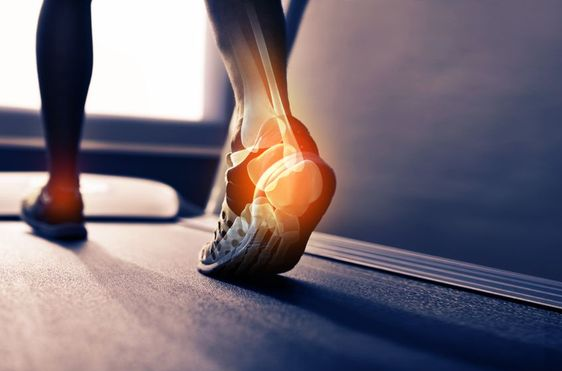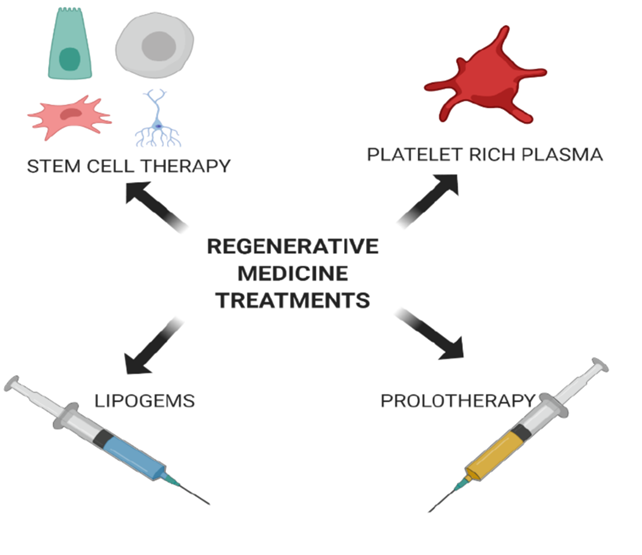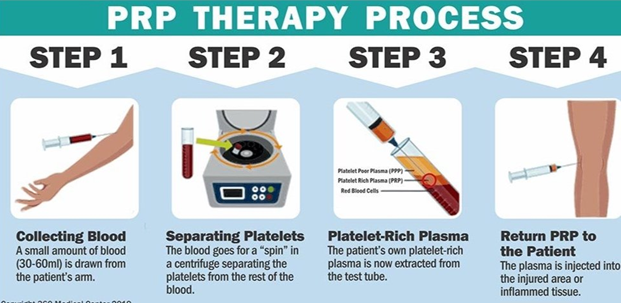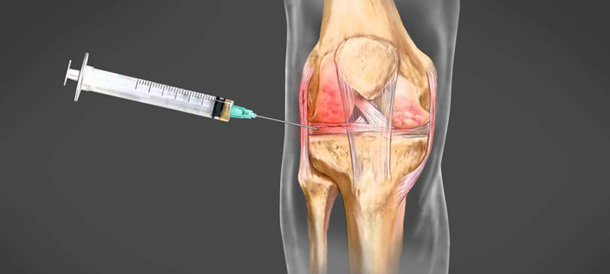There’s nothing more debilitating for an athlete than an injury that keeps them sidelined. It’s not just the physical pain they have to contend with, but also the mental stress of not being able to compete and perform at their very best.
However, emerging fields such as regenerative medicine are revolutionizing the sports injuries landscape. They’re not just healing athletes faster, but in many cases, these scientific advancements are strengthening their bodies to prevent future injuries.
This article explores the role of regenerative medicine in the recovery of sports injuries and its potential to expedite athletes’ return to the game.
The Role of Regenerative Medicine in Sports Injury Recovery
Regenerative medicine plays a significant role in facilitating the recovery of sports injuries, offering athletes a faster path to returning to their respective games. This field of medicine focuses on harnessing the body’s natural healing mechanisms to promote tissue repair and regeneration.
One promising treatment option is stem cell therapy, which utilizes the unique properties of stem cells to accelerate the healing process. Stem cells have the ability to differentiate into various cell types and can be obtained from different sources such as umbilical cord tissue, bone marrow, and adipose tissue.
Among these sources, umbilical cord tissue-derived stem cells have shown to be a safer and more ethical alternative, with low risk of rejection and infection. They have demonstrated therapeutic potential comparable to other sources, making them a viable option for treating sports injuries.
Advancements in Stem Cell Therapy for Athletes
Advancements in stem cell therapy for athletes have shown promise in accelerating the healing process and improving athletic performance.
One promising approach, featured prominently among Cellaxys treatments, is the use of intravenous mesenchymal stem cell (MSC) therapy. MSC therapy offers several advantages over other types of stem cells and delivery methods.
It has been found to accelerate tissue repair and regeneration, reducing recovery time. Furthermore, MSC therapy minimizes inflammation, alleviates pain, and promotes healing in athletes.
This treatment option has the potential to provide faster recovery for athletes, as well as improved athletic performance. It offers versatility in treating various sports-related injuries, including muscle, tendon, ligament, and cartilage damage.
Ethical and Safe Use of Stem Cells in Sports: A Game-Changer for Athletes
The ethical and safe use of stem cells in the field of sports has the potential to revolutionize the way athletes recover from various conditions and injuries.
Common applications of stem cell therapy in sports include:
- Treating Joint Injuries: Stem cell therapy is frequently used to treat a range of joint injuries. This includes conditions like sprains, strains, and more severe ligament damage. The therapy promotes natural healing, reducing downtime and getting athletes back in action quicker.
- Repairing Damaged Joint Tissues: Injuries or wear-and-tear to joint tissues can be debilitating for athletes. Stem cell therapy can facilitate the body’s own repair mechanisms, helping to mend these damaged tissues in a way that’s both safe and efficient.
- Regenerating Damaged Cartilage Tissue: Athletes often suffer from issues due to cartilage damage, such as osteoarthritis. Stem cell therapy can help regenerate this damaged cartilage, improving joint function and reducing pain.
- Accelerating the Healing Process: One of the most significant benefits of stem cell therapy is its potential to speed up the body’s healing process. This enables athletes to recover from injuries faster, reducing disruption to their training schedules.
- Strengthening Tissues to Prevent Future Injuries: Stem cell therapy isn’t just about treating existing injuries – it also helps build stronger tissues. This can result in increased resilience to future injuries, allowing athletes to perform at their best with less fear of getting hurt.
- Optimizing Performance and Gaining a Competitive Advantage: Finally, by treating and preventing injuries, regeneration of tissues and speeding up recovery, stem cell therapy can help athletes optimize their performance and gain a competitive edge.
Revolutionizing Sports Medicine: A Look at PRP Therapy
PRP therapy is revolutionizing sports rehabilitation by offering a natural approach to injury recovery. Derived from the patient’s own blood, PRP is rich in growth factors and proteins that stimulate tissue regeneration and healing.
Effective in treating a variety of sports injuries, PRP therapy’s success is achieved when combined with a comprehensive treatment plan, including physical therapy and exercise.
Advancements in PRP research continue to promise a future of quicker and more sustainable sports injury recovery.
Harnessing Prolotherapy for Enhanced Sports Injury Recovery
Prolotherapy is a non-invasive treatment technique in sports medicine known for pain management and healing promotion. It functions by injecting an irritant, often a dextrose solution, into an injured ligament or tendon, inducing an inflammatory response, and stimulating tissue repair.
Notably helpful for conditions like tendonitis and ligament sprains, Prolotherapy accelerates recovery and provides relief. When incorporated into a comprehensive rehabilitation plan, it also bolsters strength and flexibility, key factors for athletes’ successful return to competitive sports.
Conclusion: The Impact of Regenerative Medicine on Sports Rehabilitation
Regenerative medicine has dramatically transformed the landscape of sports rehabilitation, offering advanced treatment modalities that go beyond symptom management to address the root causes of injuries.
Techniques such as Platelet-Rich Plasma (PRP) therapy, stem cell therapy, and Prolotherapy harness the body’s innate healing capabilities, promoting accelerated tissue repair and regeneration.
These treatments have revolutionary implications in managing both acute and chronic sports injuries, delivering faster recovery times, improved athletic performance, and enhanced future injury prevention.
By focusing on holistic healing and rehabilitation, regenerative medicine paves the way for athletes to maintain their optimal physical condition, ensuring a quicker and more effective journey from injury to victory.
FAQs
Q: How Long Does It Typically Take for Athletes to Recover From a Sports Injury Using Regenerative Medicine?
The recovery time for athletes using regenerative medicine to treat sports injuries varies depending on the severity and type of injury. However, regenerative medicine has shown promise in accelerating the healing process and reducing downtime, allowing athletes to return to play faster.
Q: What Are Some Potential Risks or Complications Associated With Stem Cell Therapy for Athletes?
Potential risks or complications associated with stem cell therapy for athletes include invasive and painful harvesting of bone marrow-derived stem cells, contamination and variability in efficacy with adipose tissue-derived stem cells, and ethical controversies and tumor formation with embryonic stem cells. Umbilical cord tissue-derived stem cells offer a safer and more ethical alternative with comparable therapeutic potential.
Q: Can Stem Cell Therapy Be Used to Treat Chronic Sports Injuries That Have Not Responded to Other Forms of Treatment?
Stem cell therapy can be used to treat chronic sports injuries that have not responded to other forms of treatment. It offers tissue regeneration, pain reduction, and improved function, providing a potential solution for athletes seeking recovery.
Q: Are There Any Age Restrictions or Limitations for Athletes Seeking Regenerative Medicine Treatments?
Age restrictions or limitations for athletes seeking regenerative medicine treatments are not explicitly mentioned in the provided information. Consultation with qualified medical professionals is necessary to determine the suitability of such treatments for individual athletes.
Q: How Does Regenerative Medicine, Specifically Stem Cell Therapy, Compare to Traditional Surgical Interventions in Terms of Effectiveness and Recovery Time for Athletes?
Regenerative medicine, specifically stem cell therapy, offers comparable effectiveness to traditional surgical interventions with potentially faster recovery time for athletes. It promotes tissue repair, minimizes inflammation, and addresses various injuries, providing a less invasive alternative.



















